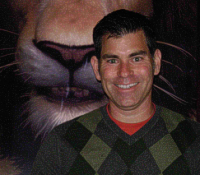 Once you have a story, you have to find a studio to produce it. In other words, you have to find your champion to support your project. And that’s when, in Enchanted‘s journey to the screen, Doug Short enters. He’s been at Disney for sixteen years, working in Development for ten of those years. He started off working exclusively for Touchstone, and then, as the Studio merged the groups together, he ended up working on Disney and Touchstone movies as an executive. His resume includes collaborating with Enchanted‘s director Kevin Lima on 102 Dalmatians, The Princess Diaries 2 and The Wild (executive produced by Lima!). In brief, his job is to find projects, and oversee their development and production.
Once you have a story, you have to find a studio to produce it. In other words, you have to find your champion to support your project. And that’s when, in Enchanted‘s journey to the screen, Doug Short enters. He’s been at Disney for sixteen years, working in Development for ten of those years. He started off working exclusively for Touchstone, and then, as the Studio merged the groups together, he ended up working on Disney and Touchstone movies as an executive. His resume includes collaborating with Enchanted‘s director Kevin Lima on 102 Dalmatians, The Princess Diaries 2 and The Wild (executive produced by Lima!). In brief, his job is to find projects, and oversee their development and production.
Doug Short is the first one at Disney who read Bill Kelly’s first script and fell in love with it, ten years before the release of the film. So, he’s also the one who supported and championed the movie all the way through those ten years, despite all the imponderables that inevitably occur during such a long period of gestation and, against all the odds, helping shape the story the best way for screen for its modern family audience.
So let’s give the floor to “the quiet storyteller”, as he calls himself, and let Doug Short tell “the story of the story” of Enchanted!

 AV: What was your role on Enchanted?
AV: What was your role on Enchanted?
DS: On Enchanted, everybody had their different string. There were quite a few people involved in getting the movie made, obviously, as in every movie. For me, my role was the quiet storyteller, the person who is trying to keep all the pieces working without drawing all the attention to myself. For me, the satisfying thing was finally getting the movie made that way that I felt it should be made.
AV: Can you tell me about the origins, for you, of the Enchanted project?
DS: Well, it’s interesting because it’s one of the very first projects that I’ve ever bought as an executive at Disney. It was way back in ’97 when I was starting out as a development person. In fact, Sunil Perkash, the Executive Producer, brought the script by Bill Kelly to Sonnenfeld/Josephson. They had a big deal with Disney/Touchstone Pictures at the time and he brought it to them thinking it would be a good fit. They in turn sent it to me at Touchstone to consider. (This is back when Disney and Touchstone were separate divisions.) I happened to read it that day and wanted to buy it immediately. It’s just the kind of thing that we had to buy. It was the perfect movie for this company. Donald De Line was the head of Touchstone at the time, so he actually bought the script. Touchstone Pictures was a more adult division. I’ve always loved Disney animation and Disney movies. So, to me, this was similar and close but the tone of the movie at the time was a lot more adult.
AV: What do you mean?
DS: Let’s see. In some early drafts Giselle wandered into the “red light district”. A friend of Robert’s spots her in the big dress and hires her to jump out of a cake for his bachelor party. Robert sees that she is an innocent and puts a stop to the bachelor party proceedings. There was never an edict to take the sequence out, rather, the story evolved and Robert’s friend was cut. Cutting out the friend helped keep the story focused on the romance between Giselle and Robert. The meet on the street while Giselle is hanging on to the billboard was a later addition. We talked about her falling from all sorts of places. At one point, even a planet at the Hayden Planetarium! We liked that she wasn’t caught by Robert – he isn’t a classic prince. Still he is kind to her and she is intrigued by him.
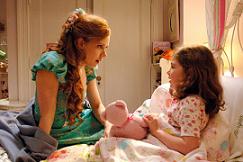 Morgan was not in the early drafts. She was added at some point during the development of the story. She is a an unspoiled, non-cynical character who sees Giselle for what she really is right away. We knew there would be a lot of kids in the audience who would see the story from a younger point of view and adding Morgan would help the kids enjoy the story from this angle. Also, adding Morgan helped show the audience what kind of man Robert was. As a loving, single father we know he is a good guy. On the other hand, as a father who gives his daughter a book of famous historical women rather than a book of fairy tales, he is a bit overprotective.
Morgan was not in the early drafts. She was added at some point during the development of the story. She is a an unspoiled, non-cynical character who sees Giselle for what she really is right away. We knew there would be a lot of kids in the audience who would see the story from a younger point of view and adding Morgan would help the kids enjoy the story from this angle. Also, adding Morgan helped show the audience what kind of man Robert was. As a loving, single father we know he is a good guy. On the other hand, as a father who gives his daughter a book of famous historical women rather than a book of fairy tales, he is a bit overprotective.
Another more adult theme we toyed with was having the prince end up with a police officer – another character that was cut. This went away, again not due to any censorship, but really because it was so much more satisfying to see Nancy go from pragmatic New Yorker to abandoning everything and becoming a princess herself. It was just a much better twist.
AV: How did things evolve from that point?
DS: While their deal was active at Disney/Touchstone, Sonnenfeld, Josephson, Sunil and I worked very closely together on the script. Eventually, however, the Sonnenfeld/Josephson deal was over and they left Disney. I saw little of Barry Sonnenfeld after that. Once the movie was up and running, Barry Josephson became very involved in the physical production of the movie. Both are incredibly talented in unique ways.
In fact, Enchanted was one of the most complicated development projects I think I’ve ever worked on! It literally took from ’97 to 2007 to get the movie done, with so much pressure to make it the perfect Disney movie. It could never be good enough. Usually, that’s the recipe for disaster in development and we definitely took some wrong turns along the way. As luck would have it, it turned out to be worth all the efforts, I think. It was really a crossroad in the script development where we were really going nowhere. We had been maybe seven years in development. Sunil Perkash and I were incredibly patient about this project, before obviously Kevin was involved. Bill Kelly was the initial writer and we actually did have quite a few directors who came in and wanted to direct the project. It was definitely on the starting line several times. But for various reasons, those versions did not ever get made, obviously.
Since we didn’t have a script that could be made, we asked Bill Kelly if he wouldn’t mind reviewing all the scripts and coming out with sort of the definitive version of what the movie should be. This was completely a quiet discussion. The Studio wasn’t really involved with it because it spent a lot of time, a lot of money hiring writers and directors and obviously the film couldn’t get made, it wasn’t happening. So, we asked Bill if he wouldn’t be amendable to reviewing all these drafts and taking his original draft which was a pretty good story and incorporating some of the best ideas from the drafts that followed to get a definitive version. And that actually became the version we presented to the Studio. So, for me, that was probably the definitive moment, the most important role I played, I think: getting the draft of the movie that actually got made.
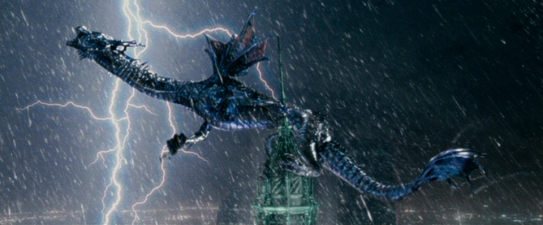
AV: How did you come to call Bill Kelly back?
DS: We had many, many different writers. Bill Kelly was involved in several drafts to begin with and then we hired many other writers after him. Maybe as many as eight, ten different writers. Some eventually worked with directors, some just came in and did a single draft. Again, it was a long, long process. So, a lot of different people were involved. It’s actually kind of wonderful and rare in Hollywood for a team to come back to the original writer. At some point, you come to a crossroad and you think: “why isn’t this working?” and you go back to where you began with, where you got the first inspiration, and you realize that there were so many things about Bill’s original screenplay that made it. We’d kept in touch with him over the year, particularly Sunil, another one of the producers, and so, he was definitely approachable. So, it eventually made sense to bring him back and give him a second chance, with the wealth of material that followed him, to go through and sort of make a definitive version of the movie.
 AV: Finally, it was Kevin Lima who was chosen to direct it. Can you tell me about your relationship with him?
AV: Finally, it was Kevin Lima who was chosen to direct it. Can you tell me about your relationship with him?
DS: Kevin is somebody I worked with first on the movie 102 Dalmatians. He came out of animation, had done an amazing work on the movie Tarzan and was looking to get into live-action. The opportunity to work on this movie came out and he came in to do that. That was a project that I was working on very closely, and that was my first time working with Kevin. Then, he went off and did other things for a while. Then, I worked on a movie called The Wild. We had some story problems and he came to help us. He got a producer credit on the movie because he gave us a direction that helped get the movie back on track.
Then, we were having troubles with Enchanted finding a director. We had a script that we liked but we needed a director again and it turned out that he came back to us because of The Wild and made us realize we needed him as a director because he had the perfect background, with his experience in live-action and in animation, his really amazing storytelling sense and his love and understanding of animation.
Because the hardest part of the project was always trying to get the character of Giselle to be a character that you can have fun with and also love at the same time. You can’t just make fun of her and make her a fool. You have to actually understand her point of view, want her to get what she wants and want to see her evolve into a character who really understands what love really could be, more than a sort of a simplistic, just general sense of, you know, this “happily ever after”. All that without loosing the sense of fun and her spirit, her happiness. Kevin understood how to strike that tone, so that they respect the past and understand where she comes from but also want her to evolve.
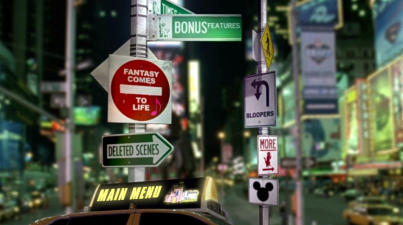
AV: In that regards, the ending of the movie is very interesting. Can you tell me how it was conceived?
DS: There was actually a lot of passionate discussion about the end of the movie internally. Some people were convinced there was no need to have such a “big” ending. I have always felt the ending was quite important for several reasons. One there is the storytelling business of what to do with Narissa. Once she is revealed to Edward to be evil, they can’t just go back to Andalasia and live as they had. So, in keeping with the traditions of so many of the Disney classics (Beauty and the Beast, The Little Mermaid and of course, Sleeping Beauty), the evil queen has to be dispatched. Then there is the sheer spectacle. It is simply cool to see Narissa transform into a dragon—like so many of the classics, her true evil self is revealed in spectacular fashion.
But the most important reason for the big finale is to finish Giselle’s character transformation. When we meet her, she expects life to happen to her. She wants to be rescued – to literally fall in the arms of a prince. When she’s stuck in New York, she patiently waits for the prince to rescue her. She tries to fall into Robert’s arms, but that doesn’t work very well. At the end of the movie, Giselle has become a different person. At the ball she is revived with a kiss. Sure it is romantic, but it is still passive – still rescued by a man. And the movie is more than just a romance – Giselle’s story is about more than falling in love. It is about her becoming proactive even in the face of danger, especially now that she’s found true love, real love. So now she’s changed and the ending is the way to see just how far her character has come.
AV: So, the movie works on many different levels.
DS: One of the great things about Kevin is that the storyboard process allows him to visualize, then add a layer and collaborate with visual artists to create details that you, otherwise, would think of on the day that you’re gonna shoot a scene of the movie. You’re actually able to think about details like that and there’s room for it because you pre-visualize it so carefully through storyboard. Those layers are definitely a part of Kevin’s process that he definitely brought to the table on all the occasions that I worked with him, from 102 Dalmatians to the The Wild and, clearly, Enchanted.
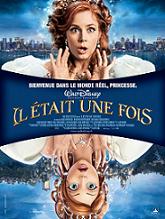 AV: Was Enchanted always intended to have 2D animation in it?
AV: Was Enchanted always intended to have 2D animation in it?
DS: Especially now with 3D, there was definitely a lot of discussion about “should it be 2D or 3D?” Actually, initially, the first script didn’t even have an animated opening. It was live-action just like a sort of a fairy tale opening. It was something that was added fairly quickly though. There were no princess movies in the pipeline at Disney Feature Animation and it seemed like it was a great time to meet a new Disney princess. Once the opening was about meeting a new Disney princess, it really set into motion the idea that we could send up and explore the Disney versions of all these fairy tales—from Snow White to Ariel. It was an interesting thing to think about. On one level, you watch the classic Disney movies and they are so simplistic – the girl pines for the guy. The handsome prince eventually sweeps her up, dispatches an evil queen of some sort and everyone lives happily ever after. Of course, these relationships are just fantasy. But still, why are they so compelling? As adults we can enjoy them in this Disney context and wish that life could be so simple. But younger kids love them on face value. They don’t think about the day after the happy ending. This was such a great opportunity to examine that princess and embrace her for her honesty and her unspoiled values, but to also see what would happen to her as she learned what true love could actually be. We hoped that kids – little girls in particular, would think about relationships, happy endings, and love just a little differently after seeing Enchanted.
So, we had the idea to create an animated opening as the perfect way to sort of nod to the Disney tradition, and for me, to get to work in animation! We wanted to send out, to explain the people that we were actually looking to Disney’s past with this animated opening. So, with that, we definitely would be messing with the Disney Princess realm, one of the most amazing, historical legacies of the company. So, you definitely have to come up with a story that lives up to the ambition. I wasn’t involved with James Baxter directly but I definitely was involved in the decision to make a 2D opening. I felt that, because we were dealing with a princess who wasn’t modern, who wasn’t contemporary, even in the way Belle was, really, a character from Disney’s past, it didn’t make sense to have her be 3D because we wanted to be clear to people that she’s definitely from the Disney past. So, that was something that we definitely put in and that Kevin was equally passionate about, I think, to make sure that she was somebody from the Disney history.
I think people were excited to come on board, to make a movie that had such an iconic type of character – the Disney Princess – and to work in 2D, in a medium that hadn’t been worked in a long time, along with Alan Menken and Stephen Schwartz! It was an opportunity to embrace and at the same time to have fun with the Disney history. So, people came to this movie really, really excited about what it could be! We were lucky because of the type of project that it was, the quality of the script and Kevin’s vision for the movie. You know, once the movie actually got going, the Studio was committed to get the movie made, and it was a surprisingly unpainful production process!

AV: Considering your position at Disney, you seem to be more of a “live-action person”, and yet, you did a lot of animation.
DS: Actually, you’re right. I’ve worked on a movie called Lizzie McGuire which had a little bit of animation. I worked on The Wild which is really a fully animated movie and which was something that was kind of a dream come true for me because I got to actually make an animated movie as part of a live-action group. And then, obviously Enchanted had a big animated element to it. So, hopefully, my future holds more movies with animation. I just love the medium and what you can do with it! So, I’m hopeful that I will have more of those films.
 AV: Were you involved in the shooting of the film, on set?
AV: Were you involved in the shooting of the film, on set?
DS: At that point, Kevin really had his team in place so, I was there but I wasn’t involved in a day to day basis. Kevin had a very clear vision for the movie from the time he got involved. He storyboarded the movie for animation. I worked with him on that level a lot, helping his vision come to life through storyboard, but not as much on the set.
AV: Is there any moment in the production of Enchanted that you cherish more than the others?
DS: Wow! There were so many highs and lows over the many, many years that I worked on the movie! I think that, probably, the most satisfying part of it was seeing the movie done. It was a couple of years ago. Kevin finally presented the final version of his movie and I just knew that we had the movie that we all wanted to make, with the right music, the right characters, the right tone. We’ve got an amazing good luck in getting such a talented cast to be in the movie. So, the movie, obviously, was incredibly rewarding to see. But also getting that script out of Bill after all those years of going in so many different directions and trying to figure out what the story, Giselle’s adventure, should be. What is her journey when she comes to New York? How does that all work? It seems so simple now because the movie just seems like it just makes so much sense. So, to have got to get Bill’s script, to read it and think: “Oh, my God! This is the perfect version of the movie!” was incredibly satisfying!
AV:What will you keep from this unique experience?
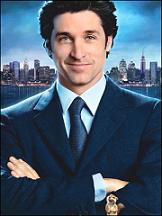 DS: You know, at the end of the day, all of us would say that we’re very proud of the movie. You know, when I first saw it, people were asking: “after such a long time, is it the movie that you’ve hoped for?” And I said: “Absolutely. 100%. I’m so pleased. Somehow, after all those years, all those ups and downs, it was the movie I’ve always wanted to see. The tone, the comedy, the heart, the romance… ” So, I’m so happy and proud of Kevin for making it happen on screen. You never know what the process is going to do. But people understood and loved the movie. You know, we’ve always hoped that it would be popular, with bigger audiences, profitable, obviously, something that would do well in theaters, but also that it actually was embraced by critics who would appreciate the humor and the tone. It was incredibly satisfying to see that happen!
DS: You know, at the end of the day, all of us would say that we’re very proud of the movie. You know, when I first saw it, people were asking: “after such a long time, is it the movie that you’ve hoped for?” And I said: “Absolutely. 100%. I’m so pleased. Somehow, after all those years, all those ups and downs, it was the movie I’ve always wanted to see. The tone, the comedy, the heart, the romance… ” So, I’m so happy and proud of Kevin for making it happen on screen. You never know what the process is going to do. But people understood and loved the movie. You know, we’ve always hoped that it would be popular, with bigger audiences, profitable, obviously, something that would do well in theaters, but also that it actually was embraced by critics who would appreciate the humor and the tone. It was incredibly satisfying to see that happen!
AV: It seems that Enchanted is helping to redefine the Disney brand in a way. What do you think about that?
DS: I mean, the subject matter in part was the history of Disney, what Disney had been, and then we brought it into some contemporary environment. In doing so, you’re bridging that gap and Kevin was able to find the right tone to embrace the past, have fun with it, also, and contemporize it, have fun with contemporary elements. It’s not every day that you have an idea that touches on the classic elements of Disney. It’s an opportunity which is double-sided. It’s a great opportunity but it’s also a lot of pressure. One of the reasons why other versions of the movie didn’t get made was because they weren’t good enough for the subject matter. You’re gonna make a movie that has classic animation and is done with a Disney Princess character. You’re just not gonna make a version that’s “ok”. Your version has to live up to the expectations of the subject matter. You know, you always hope for that for all the projects, but the scrutiny that this movie would get would be beyond the typical movie because you’re messing with Disney’s big guns: Disney animation, Disney music, etc…
AV: You’re messing with culture.
DS: Yes. I mean, the Disney Princess is part of popular culture. So, if you’re gonna have fun with that, definitely, you need to understand and appreciate it and respect it, and not just make fun of it. It’s easy to make fun of it and that’s just one way to go. You know, the struggle always was how to respect and understand Giselle. If you’re a girl from this world, of course, that’s how you think and that’s how to be, but there’s something very wrong with that in her world. So, the problem comes when you get to some place out with a different way of being.
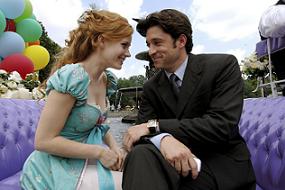
AV: Now that the movie is a hit and that it was nominated for the Academy Awards, do you know if there will be a sequel?
DS: You know, that’s definitely been talked about it. I think it’s always tricky to have a story beyond “happily ever after”. I worked on a bunch of movies like 102 Dalmatians which, obviously was challenging because of that. We made a sequel to Princess Diaries, another that I worked on and the sequel was a lot harder than the first one! So, it’s just definitely talked about it. Whenever it’s a big success and a movie the people love, you want to see more of these characters, so it’s definitely possible!
Our special appreciation to Doug Short.


